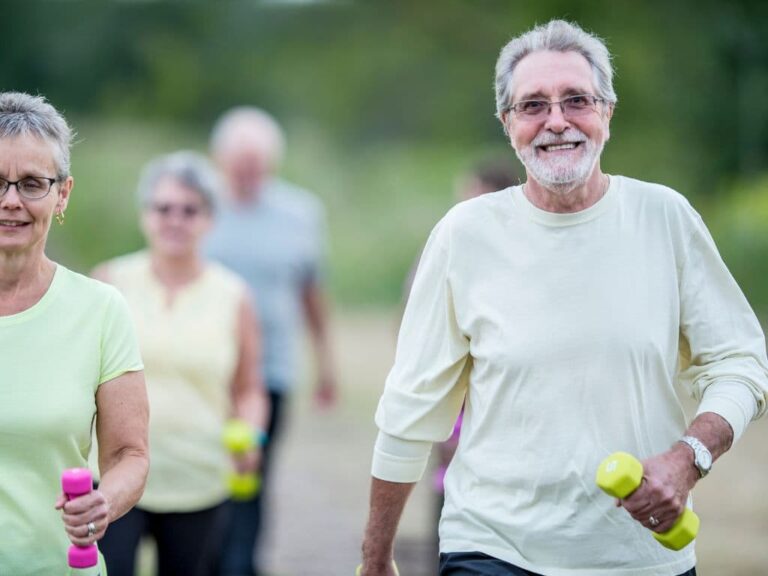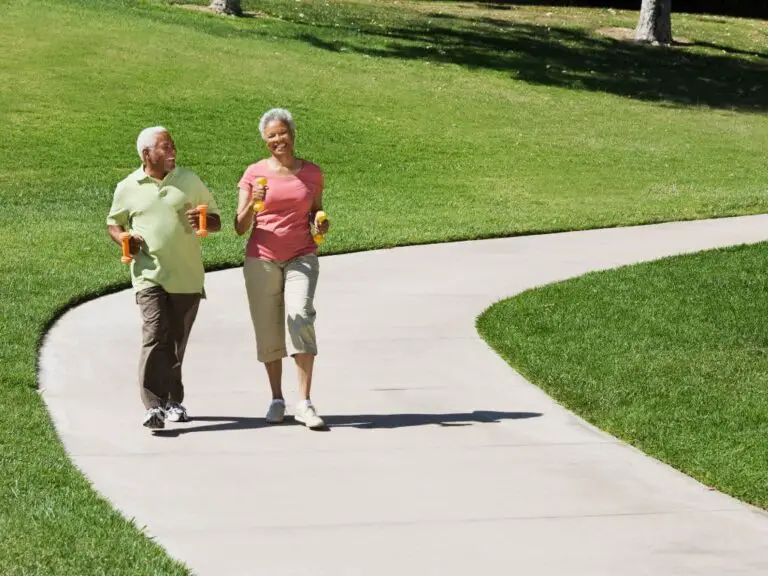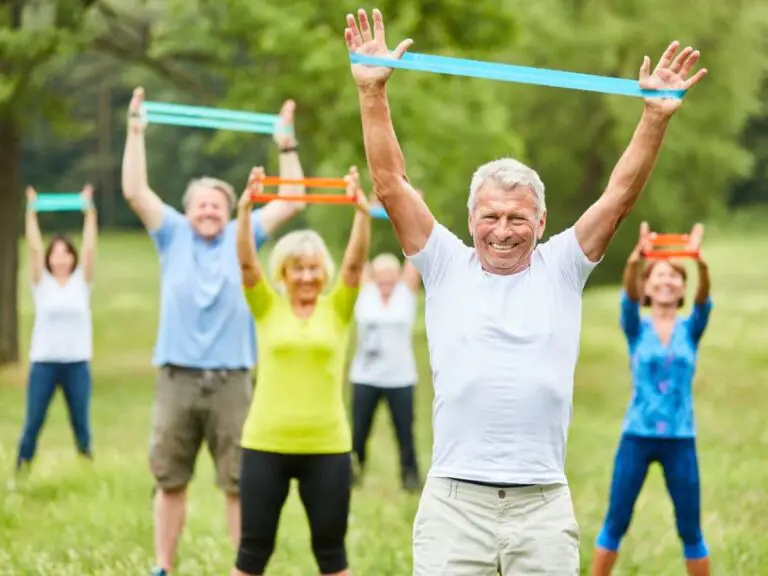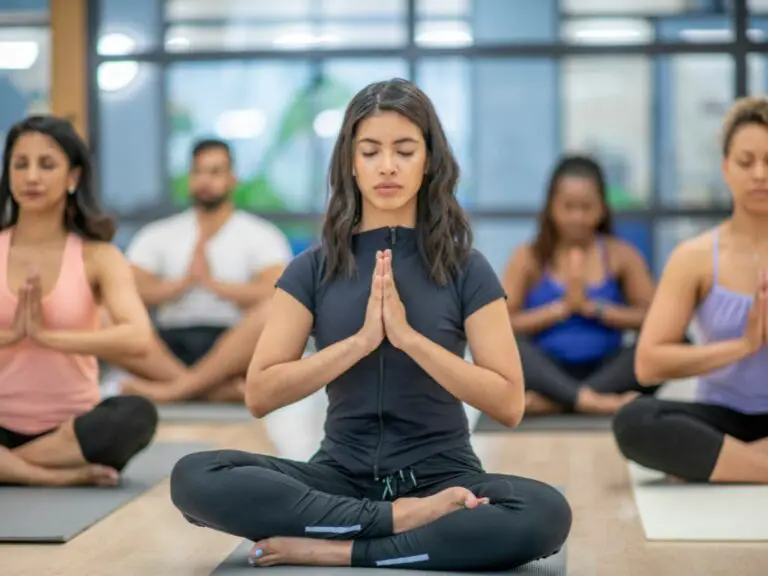Is Stationary Bike or Treadmill Better for Seniors?
Regular physical activity is crucial for seniors to maintain their health, independence, and overall wellbeing. Finding enjoyable and sustainable ways to exercise can be challenging as we age. Two popular home workout options are stationary bikes and treadmills.
But which offers the greatest benefits for seniors?
The main difference between a stationary bike and treadmill is that a stationary bike offers a low-impact cardiovascular workout that is gentle on the joints, making it ideal for seniors with arthritis or mobility issues. On the other hand, treadmills provide a weight-bearing exercise that can strengthen bones and muscles, beneficial for seniors with good mobility and no major joint limitations.
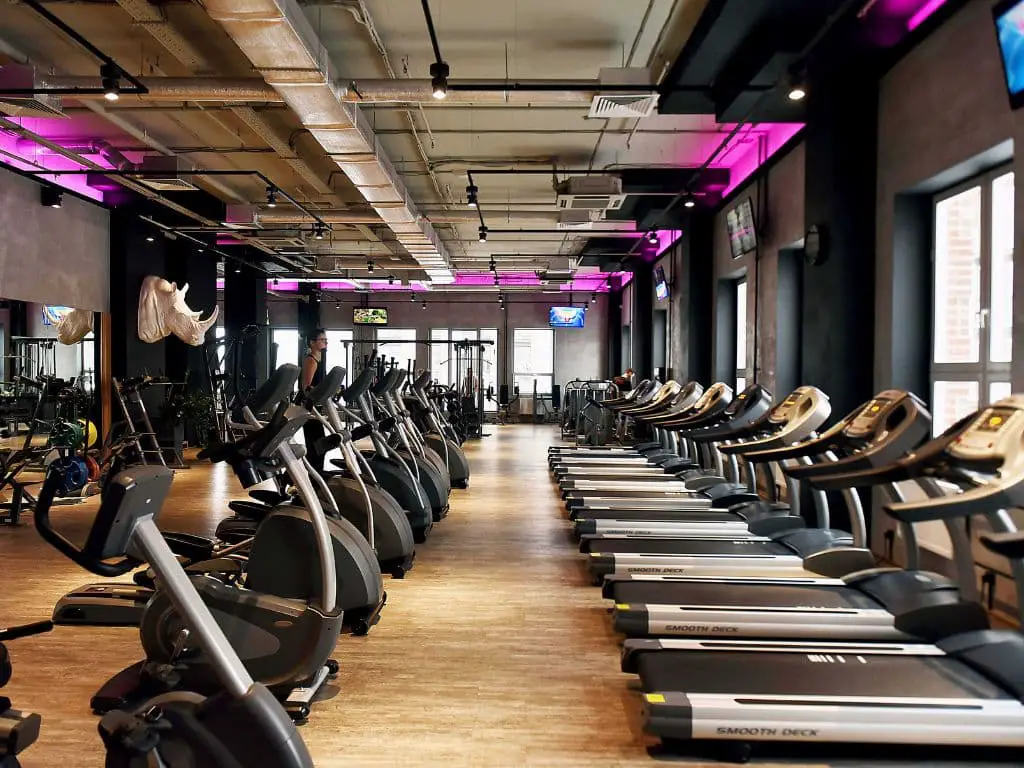
What is the Importance of Exercise for Seniors?
Participating in regular cardiovascular, muscle-strengthening and balance training activities provides immense benefits for seniors. Exercise helps prevent many age-related declines in health and physical ability. It reduces the risk of heart disease, stroke, type 2 diabetes, osteoporosis, arthritis, and certain cancers. Staying active also helps seniors maintain strength, flexibility, balance and coordination. This enables better mobility and reduces the risk of dangerous falls. Mentally, exercise improves mood, sleep quality, and cognitive function. Socially, it provides opportunities for socializing and building relationships. Overall, physical activity is one of the best ways for seniors to maintain health and independence as they age. Finding enjoyable and sustainable exercise is key.
Stationary bikes and treadmills are both popular aerobic exercise options that can effectively contribute to a senior’s fitness regimen. They also offer the convenience of an indoor workout.
How Do Stationary Bikes and Treadmills Contribute to Aerobic Exercise?
Aerobic exercise improves cardiovascular health by strengthening the heart and lungs. It helps control blood pressure and blood sugar levels. For seniors specifically, aerobic activity has been shown to reduce the onset and progression of Alzheimer’s and dementia. Both stationary bikes and treadmills provide effective aerobic workouts by raising heart rate and breathing for sustained periods. This improves endurance, burns calories, and reduces body fat.
How Can Indoor Workouts Benefit Seniors?
Exercising at home offers many advantages for seniors versus outdoor activities. Inclement weather is not an obstacle for maintaining regular workouts. Indoor options also provide climate control, reducing risk of overheating or cold exposure. Home workouts eliminate the need to drive to a gym. They also remove anxiety about exercising in public around younger or more fit individuals. The privacy and convenience lead to better exercise adherence for many seniors. Stationary bikes and treadmills enable them to reap all the benefits of aerobic activity from the comfort of home.
Stationary Bike vs. Treadmill: A Comparison
So should seniors choose stationary bikes or treadmills for their home workouts? There are pros and cons to both options.
Which is Better for Seniors: A Stationary Bike or a Treadmill?
There is no definitive answer on whether bikes or treadmills are better for seniors. The choice depends on an individual’s health conditions, fitness goals, and personal preferences. For some seniors, low-impact stationary bikes are the safer, more comfortable option. Others may prefer the range of intensity and challenge that treadmills provide.
What are the Benefits of Using a Stationary Bike for Seniors?
Stationary cycling offers excellent cardiovascular exercise for seniors without stress on the joints. It improves heart and lung function while going easy on knees, hips and other joints prone to arthritis. Stationary bikes also activate core stabilizer muscles. This enhances balance and coordination, reducing risk of falls. Cycling works the leg muscles without body weight impact. This makes it an ideal activity for seniors with osteoporosis. The seated position is comfortable for those with back pain or mobility issues. Stationary bikes are low impact and low risk. They provide stable, controlled movements for seniors concerned about injury or balance challenges.
What are the Risks of Using a Stationary Bike for Seniors?
While low impact, cycling does carry some injury risks. It primarily involves repetitive motions, making muscles, tendons and joints prone to overuse. Proper bike positioning and settings are important to avoid knee, hip or back pain. Seniors should build up duration and resistance gradually. Those with severe orthopedic conditions or balance impairment may require assistance getting on the bike safely. Upper body exercise is limited on stationary bikes. Seniors would need supplemental strength training to maintain upper body muscle mass and bone density.
What are the Benefits of Using a Treadmill for Seniors?
For seniors without severe orthopedic issues, treadmills offer versatile cardiovascular and strength training. Walking and running on a treadmill build lower body endurance. The range of speeds and inclines allow seniors to customize intensity. Treadmills are weight bearing, providing greater bone strengthening benefits. Hand rails provide stability, making them accessible even for those with some mobility or balance limitations. Many models include programs aimed at seniors. Features like slow start speeds and long hand rails accommodate age-related needs. Treadmills allow seniors to log miles walking or running without concerns about weather or safety outdoors.
What are the Risks of Using a Treadmill for Seniors?
Treadmills do present some risks, especially for seniors prone to falls. Balance and coordination are required to walk or run safely on a moving treadmill. Slow reflexes or foot numbness from conditions like peripheral neuropathy can lead to slips or falls. The belt motion may aggravate joint pain for those with severe arthritis. Prior orthopedic injuries or surgeries may also preclude treadmill use in some seniors. As with stationary bikes, gradual build up of speed and incline is important to avoid strain or repetitive stress injuries. Proper treadmill maintenance and cleaning are also essential to prevent slips and falls.
Impact on Specific Health Conditions
Beyond general fitness, stationary bikes and treadmills can aid seniors managing specific age-related health conditions.
How Can Low-Impact Exercise Help with Joint Pain in Seniors?
For seniors suffering from osteoarthritis or joint pains, low-impact activities are key. Stationary cycling provides excellent cardio exercise without pounding the joints. The smooth circular pedaling motion minimizes compression and strain on joints. It can improve mobility and reduce pain in the knees, hips and lower back. Recumbent bikes allow seniors to recline for even greater comfort. Handcycles are ideal for those with upper body arthritis pain. The ability to bike comfortably despite joint issues makes cycling a top exercise choice for seniors with arthritis or chronic pain.
How Can Cardiovascular Exercise Benefit Seniors with Arthritis?
Along with joint pain, many seniors with arthritis have elevated cardiovascular risks. Osteoarthritis and rheumatoid arthritis increase chances of hypertension, heart attack and stroke. Aerobic activities like biking and walking help manage these risks. Stationary cycling and treadmills raise the heart rate without exacerbating joint pain. This improves cholesterol, blood pressure and circulation. Regular cardio exercise also helps seniors with arthritis control weight. Excess weight puts added strain on painful joints. Maintaining a healthy weight via aerobic activity like biking and walking eases joint stress.
How Does Muscle Strengthening from Physical Activity Impact Osteoporosis in Seniors?
Osteoporosis progressively weakens bones, increasing fracture risks. Weight bearing and muscle strengthening exercise are vital to prevent and treat osteoporosis. Walking on a treadmill engages lower body muscles against resistance. This builds hip and leg bone density. Strength training also slows age-related muscle loss. Having stronger leg, core and back muscles improves balance, stability and posture. This reduces seniors’ chances of falls and dangerous bone fractures. Cycling does not directly strengthen bones like treadmill walking. But the pedaling does enhance leg muscle tone and joint mobility. This still lowers risks of falls and injuries. For optimal osteoporosis management, seniors may benefit from combining cycling’s joint protection with treadmill walking’s bone strengthening.
Making an Informed Decision
When choosing a home exercise machine, seniors must consider their health history, mobility, balance and fitness goals.
How Can I Choose the Right Exercise Machine as a Senior?
Seniors with stability or balance limitations may fare better starting with stationary bikes. Their seated position and smooth motions make them very accessible. Seniors struggling with arthritis, joint pain or prior orthopedic injuries should also begin with cycling. Its low impact nature lets them exercise pain-free. Individuals recovering from heart conditions or new to exercise may also want to start with biking. It allows cardiovascular training while monitoring exertion closely.
For seniors with sufficient mobility and no major joint limitations, treadmills offer greater training versatility. Their range of speed and incline allow cardio progression. Treadmills provide weight-bearing benefits important for bone density. Their walking/running motion uses natural movement patterns. Seniors training for events or seeking new challenges may prefer treadmills. Those with specific goals like running a 5k or climbing stairs more easily may benefit most from a treadmill’s progressive training.
How can I Ensure my Home Workout is Safe and Effective?
Whichever machine they choose, seniors must prioritize safety. Proper settings, positioning, warm up and cool down help prevent injuries. Workouts should start slowly with gradual increases in duration or intensity. Seniors should listen to warning signs from their bodies regarding pain, breathing difficulties or dizziness. Having an emergency alert system and exercising near a phone can provide peace of mind. Staying hydrated and monitoring heart rate ensures workouts remain effective yet safe. Record keeping also helps seniors monitor progress and optimize their programs over time.
Staying Motivated to Exercise
Remaining consistent with home workouts is critical but challenging. Simple strategies can boost motivation.
How can I Stay Motivated to Maintain Regular Physical Activity as a Senior?
Hardwiring exercise into a daily routine makes it more sustainable. Scheduling workouts at the same time each day helps create habits. Exercising immediately after waking, with a cup of coffee or while watching a favorite TV show embeds activity into everyday rituals. Varying workouts with interval training or cross-training prevents boredom. Milestone tracking and fitness journaling reinforces progress. Social motivation helps too. Exercising virtually with friends or family makes it more enjoyable. Seniors who lack intrinsic motivation may benefit from virtual coaching and accountability. Apps, online classes and activity trackers provide external motivation to stay active consistently. Most importantly, finding activities they genuinely enjoy will make seniors more likely to keep exercising in the long run.
Conclusion
Maintaining physical activity is absolutely vital for seniors’ health as they age. Stationary bikes and treadmills both provide effective home workout options with unique benefits. Low impact stationary bikes enable comfortable cardio exercise for those with limited mobility or joint pain. Treadmills build cardio endurance while also strengthening bones and muscles. The right choice depends on seniors’ health conditions and fitness goals. With appropriate precautions and motivation strategies, bikes and treadmills can both successfully promote regular exercise. Staying active is key for seniors to preserve their physical function, independence and quality of life.
Frequently Asked Questions
-
Is stationary bike or treadmill better?
You must consider how intense and long you train when comparing calories burned by stationary bikes to treadmills. Research suggests that stationary cycling can burn 7.9810.48 calories/minute while running on a treadmill is 8.1810.78 calories ( 10).
-
Are peloton bikes good for seniors?
For those who are looking to live a retired lifestyle, a Peloton Seniors Cycle Class is for you. These classes are great for seniors, and they offer a low-impact activity such as indoor cycling that can be heart rate trained.
-
How long should a 70 year old ride an exercise bike?
The World Health Organization recommends that seniors 65 years and older should be doing at least 150 minutes of moderate intensity aerobic exercise per week. Simpson suggests that seniors start cycling three times per week, each for 20-30 minutes.
-
Is a exercise bike good for knees?
A 2021 study published in Clinical Rehabilitation found that stationary biking reduced pain and function for people suffering from knee osteoarthritis.
-
Can you use an exercise bike on carpet?
Materials. Rubber mats are the best choice for an exercise mat. Rubber mats are suitable for all types of flooring, even carpet. They are durable and water-resistant, provide excellent grip and can be cleaned easily.
-
Is a home exercise bike worth it?
A stationary bike can be a great way to lose calories and fat, strengthen your heart and lungs and increase muscle strength. A stationary bike is less stressful than other cardio equipment but still offers a great aerobic workout.
-
Is 30 minutes a day on an exercise bike enough?
An exercise bike can help you lose weight by burning calories. A 30-minute moderate ride on a stationary bike can help you lose 260 calories.
-
What is the best exercise bike for an older person?
Sunny Health & Fitness SFRB4616 Magnetic Recumbent Exercise Bicycle is one of the most popular recumbent bikes. The bike is easy to operate, sturdy, smooth, and durable. There are eight levels of magnetic resistance on the bike, which is ideal for weaker and deconditioned riders.
-
Is a cheap exercise bike worth it?
Although a cheap exercise bike might not have an LCD screen or fitness programs, it is still worth the cost if your budget is tight. Recumbent and upright bikes are the two main types of exercise bikes. You can burn more calories with the upright bike, which offers more intense training.
-
Can old people use spin bike?
There are many health benefits to indoor cycling for seniors, regardless of whether they’re already physically active or looking to get into a different type of exercise. The rider can enjoy cardiovascular benefits like lowering blood pressure and lowering LDL cholesterol.

